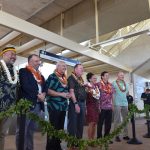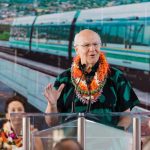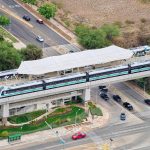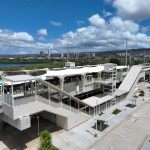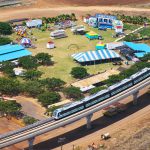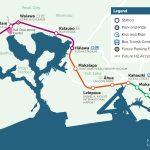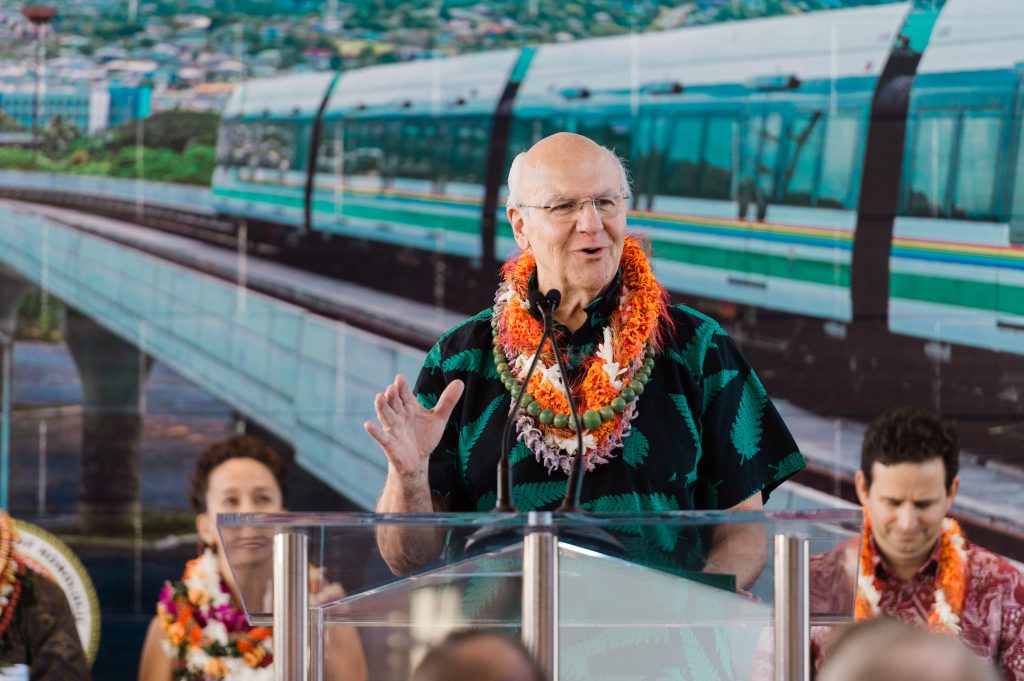 Passenger service on the first section of Honolulu Skyline, the first fully autonomous metro in US, was inaugurated on June 30.
Passenger service on the first section of Honolulu Skyline, the first fully autonomous metro in US, was inaugurated on June 30.
The opening ceremony which took place at the Hālawa station was attended by the Mayor of Honolulu, Rick Blangiardi, the Governor of Hawaii, Josh Green, the Director of City’s Department of Transportation Services, Roger Morton, the U.S. Senator Brian Schatz, and Alistair Dormer, Executive Vice President of Energy and Mobility at Hitachi as well as a number of other dignitaries. 250 people attended the opening ceremony and have also took the inaugural train ride through the nine stations.
The western elevated section is 17 km long (10.75 miles) with nine stations connecting East Kapolei at Kualaka`I station and Aloha Stadium, at Hālawa station. The Skyline is the US’ first autonomous urban rail system. While there are already rubber-wheeled and light autonomous people movers, mostly at airports, this is the first true mass transit GoA4 (Grade of Automation) system in operation in the United States.
“This system represents a long-overdue opportunity and I cannot thank enough the hands that went into completing this first phase of the project. Skyline presents an unprecedented opportunity to connect passengers to our central and leeward cities and the distinct beauty and character they each possess,” the Mayor of Honolulu said.
Under the Honolulu Skyline project, Hitachi Rail, part of the joint venture, has been responsible for the design and construction of the subsystems such as fire detection, alarm system, passenger screen gate system, testing and commissioning the entire system to be safety certified for passenger service and operating and maintaining the system during passenger revenue service.
The line is served by 20 four-car trains, each equipped with capacity to hold up to 800 passengers. Total train length is 260ft, with generous open gangways between cars to allow passengers to move freely using all available space.
Trains are also air conditioned, featuring Wi-Fi for all passengers, as well as ample space for bicycles, surf boards, baby strollers, luggage, and more. Trains are also fully compliant with the Americans with Disabilities Act (ADA) with dedicated spaces for wheelchairs allowing free autonomous movement for disabled passengers embarking on and off the trains. The new line has been delivered on behalf of the Honolulu Authority for Rapid Transportation (HART) and the City’s Department of Transportation Services (DTS) and it marks the first new major metro system to launch in the US since 1993.
The first fully autonomous metro in US project is implemented into four phases with the first one including the western section. The second section, which is currently being constructed, will connect Aloha Stadium at Hālawa station and Middle Street-Kalihi Transit Center at Kahauiki station including the airport. The construction of the guideway and stations will be complete this year, but the systems work, and the testing are still needed, including electrical, communications, train control, and signalling. This 8.3 km (5.2 miles) section with four additional stations is expected to enter passenger operation in 2025.
The third phase of the project will be the City Centre segment with a length of 4.8 km (3 miles) of track and six stations to a temporary terminus at the Civic Centre station in Kakaako. This section is expected to be completed in 2031.
The other 1.6 km (1 mile) extension, from Civic Centre (Ka’ākaukukui station) to Ala Moana Centre (at Kalia station) with an intermediate station, is the last section to be put into operation after 2031.
All Skyline stations, excluding Honouliuli – Ho`opili Station, and Hālaulani – Leeward Community College station, will have bus stops and connectivity.
When completed, the first fully autonomous metro in US will have a total length of 30.5 km (19 miles) served by 19 stations from East Kapolei to Ala Moana Centre, on the south shore of O‘ahu. The system is all electrically powered and will move people on to sustainable transport and away from pollution via private cars, reducing emissions and congestion for residents and tourists. The densely packed O‘ahu east-west transport corridor currently suffers from notoriously bad congestion and significant traffic delays. The new high capacity transit system is also set to unlock important economic benefits for the Hawaiian economy.
Share on:



